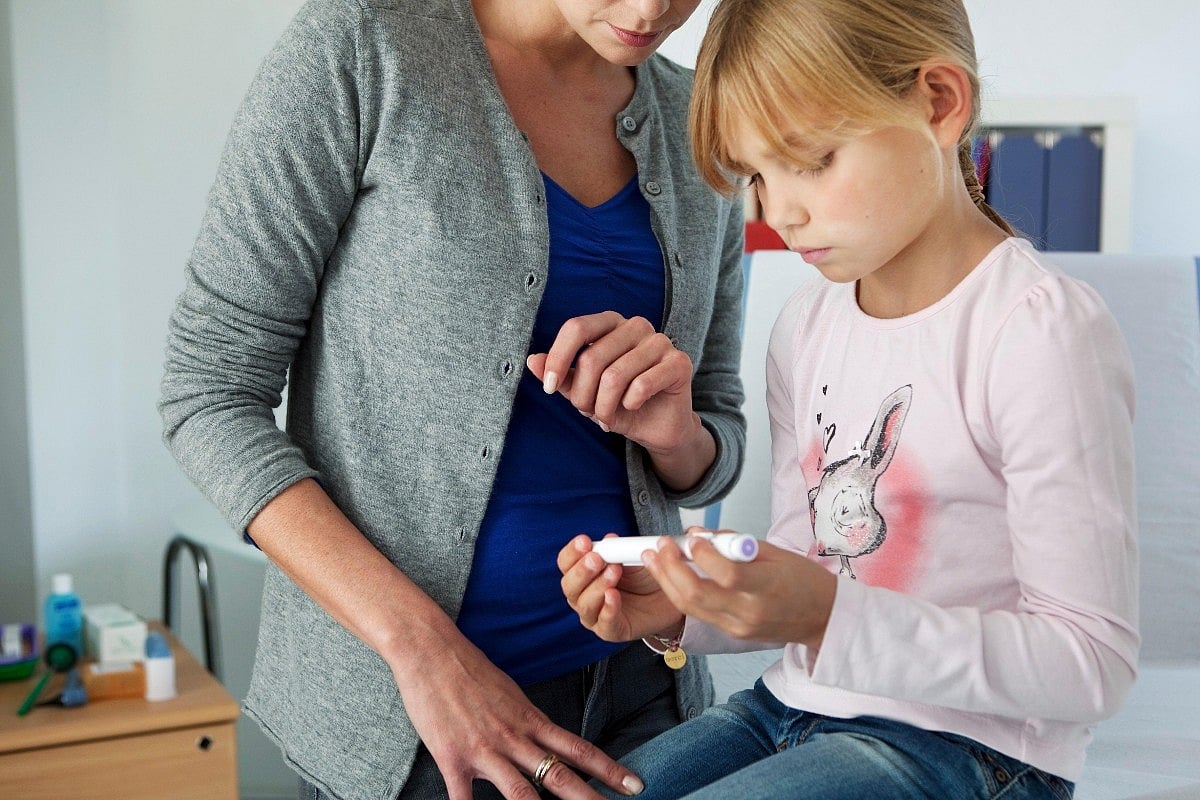Get Healthy!

- Dennis Thompson
- Posted July 29, 2024
Mom's Type 1 Diabetes Might Shield Her Children From the Disease
Having a mom with type 1 diabetes might provide long-term protection against the condition in children, a new review finds.
This protective effect is suggested by that fact that a child is almost twice as likely to develop type 1 diabetes if their father has the condition than if their mother does, researchers reported Friday.
The findings were presented at the European Association for the Study of Diabetes annual meeting in Madrid.
Exposure to type 1 diabetes in the womb probably is conferring some protection to kids, said lead researcher Dr. Lowri Allen. She's with the Cardiff University Diabetes Research Group in the U.K.
“Taken together, our findings suggest the relative protection associated with having a mother versus father with type 1 diabetes is a long-term effect that extends into adult life,†Allen said.
Type 1 diabetes is an autoimmune disease where the immune system targets and attacks insulin-creating cells in the pancreas. If enough of those cells are destroyed, a person must take insulin to stay alive.
“Individuals with a family history of type 1 diabetes are 8 to 15 times more likely to develop the autoimmune condition,†Allen said in a meeting news release. “However, studies have shown the risk is higher if the affected relative is the father rather than the mother. We wanted to understand this more.â€
For the study, researchers analyzed pooled data from five prior studies regarding nearly 11,500 people with type 1 diabetes.
The results show that people with type 1 diabetes were 1.8 times more likely to have a father with the condition than a mother with it. This was the case both for children and adults diagnosed with type 1 diabetes.
Diagnosis of type 1 diabetes happened at about the same age whether or not a person’s mother or father had the condition, researchers added.
The researchers also used a genetic risk score to analyze the patients in the study. The score takes into account more than 60 different genes associated with type 1 diabetes.
People who had moms with type 1 diabetes had similar genetic risk scores to those with diabetic dads, results show. This suggests their relative protection against diabetes wasn’t due to the genes they inherited.
However, the results also showed that having a mother with type 1 diabetes only provided protection against the condition if she developed diabetes prior to pregnancy, researchers said.
“This, coupled with the finding that the inherited genetic risk of type 1 diabetes was not different in individuals with affected mothers and fathers, suggests that exposure to type 1 diabetes in the womb is critical,†Allen said.
Further research is needed to figure out what exactly is occurring in the womb to provide some protection against type 1 diabetes, researchers said.
Exposure to high blood sugar levels, insulin injections or antibodies associated with type 1 diabetes all might contribute to a child’s protection against the chronic illness, Allen said.
“Understanding why having a mother compared with a father with type 1 diabetes offers a relative protection against type 1 diabetes could help us develop new ways to prevent type 1 diabetes, such as treatments that mimic some of the protective elements from mothers,†Allen said.
Because these findings were presented at a medical meeting, they should be considered preliminary until published in a peer-reviewed journal.
More information
The American Diabetes Association has more on type 1 diabetes.
SOURCE: European Association for the Study of Diabetes, news release, July 26, 2024







